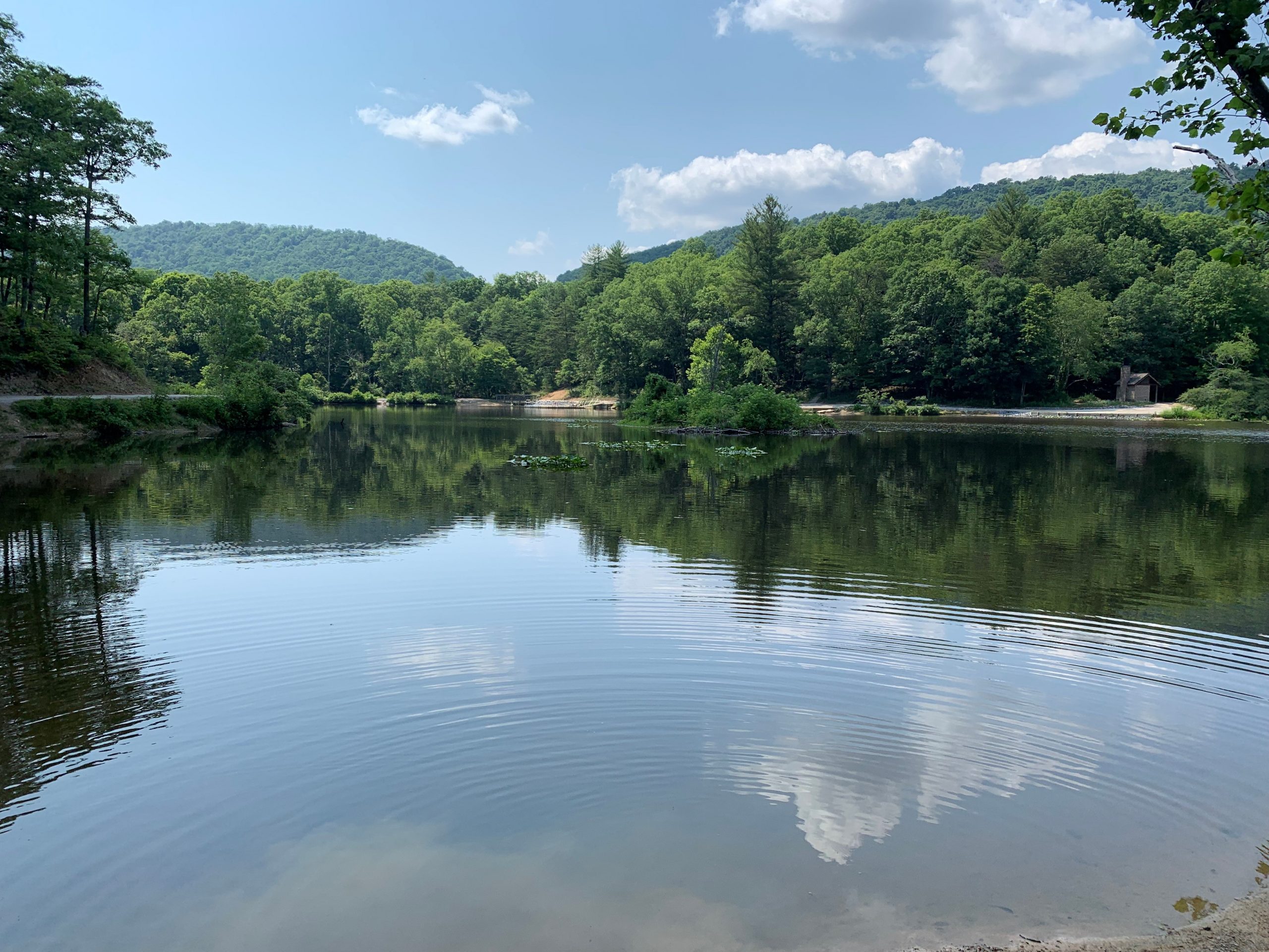 Potentially toxic cyanobacteria have formed a “harmful algal bloom” (HAB) in Pandapas Pond.
Potentially toxic cyanobacteria have formed a “harmful algal bloom” (HAB) in Pandapas Pond.
This type of blue-green algae may produce a toxin that can cause rashes and other illnesses.
The Virginia Department of Health warns pond visitors to stay out of the water, and to keep their pets out, too. Due to relatively low body weight, children and pets are at greater risk of severe illness if they ingest the water. Pets also can fall ill if they get wet and then lick their fur.
Pandapas Pond is a pastoral, 8-acre pond located just outside Blacksburg. It sits on the Eastern Continental Divide and is surrounded by a forest of hardwoods and rhododendron.
A one-mile wheelchair accessible trail encircles the pond. A wooden boardwalk separates the pond from a small wetland area that is abundant with dragonflies, turtles, songbirds, and waterfowl.
Horses and bicycles are not permitted on the trail around the pond; however they may use the 17-mile Poverty Creek Trail system that can be accessed from the upper parking lot.
HABs occur when warm water and nutrients combine to create favorable growing conditions for algae. They can become so dense that they turn the water green or bluish-green and form scummy clumps or glops on the water surface that look like paint.
Activities that may result in accidental ingestion, such as swimming, pose the greatest health due to the potential for this algae to produce toxins. Some activities such as kayaking, canoeing, and fishing may continue with proper caution to avoid water contact.
“The Department of Environmental Quality will conduct follow-up sampling in September to check on the status of the bloom,” said Gary Coggins, environmental health manager senior, New River Health District. “We also are working with the U.S. Forest Service to coordinate announcements, to post signs, and to inform visitors of the bloom so they may take care to avoid contact with the water.”


